 |
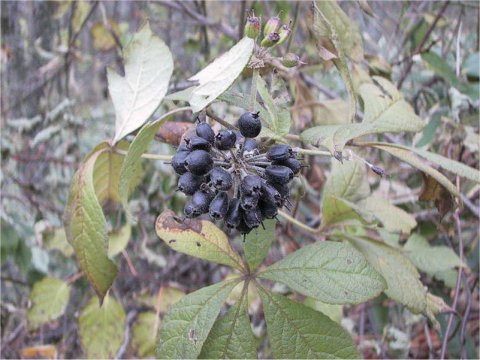

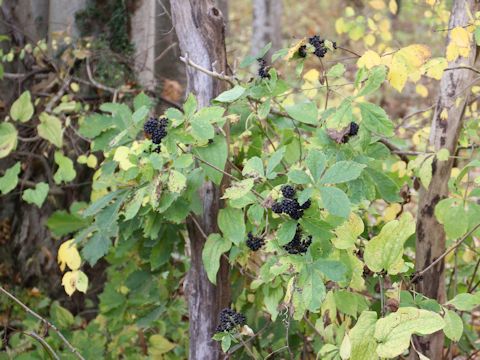

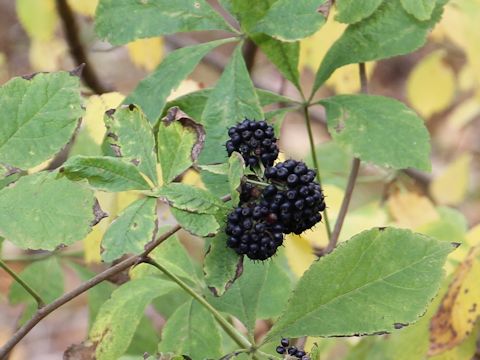

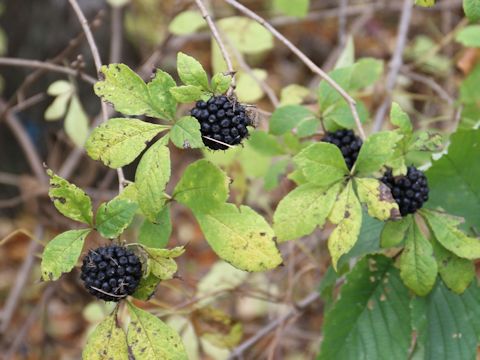

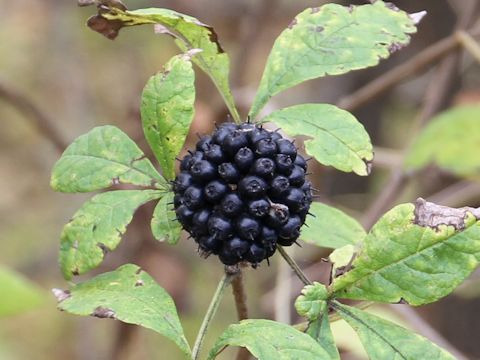

|

|
わが国の各地に分布しています。山地に生え、高さは3メートルほどになります。幹や枝には棘があります。葉は掌状複葉で、小葉は5個あり、葉の裏面脈上には絨毛があります。7月から9月にかけて、黄緑白色の花を球状に咲かせます。秋には「やつで(八つ手)」のような黒い球形の果実をつけます。若葉は山菜として食べられます。別名で、「おにうこぎ(鬼五加)」とも呼ばれます。
|

|
ウコギ科ウコギ属の落葉低木で、学名は Eleutherococcus divaricatus (syn. Acanthopanax divaricatus)。英名はありません。
|

|
The "Ke-yama-ukogi" (Eleutherococcus divaricatus) belongs to Araliaceae (the Ginseng family). It is a small deciduous tree that is native all over Japan. This tree grows in mountains and it can reach about 3 m in height. The stem and branches are covered with spines. The leaves are palmately compound with five leaflets which having densely villous on abaxial veins. The yellow-greenish white flowers bloom in globoid clusters from July to September. Its bears black globose, Japanese aralia-like fruits in fall. The young leaves are used as a wild vegetable.
|

|
[上] 長野県立科町芦田八ヶ野「林道夢の平線」にて、2001年10月21日撮影。
[中1〜3・下] 山梨県山中湖村山中にて、2015年11月01日撮影。
|






